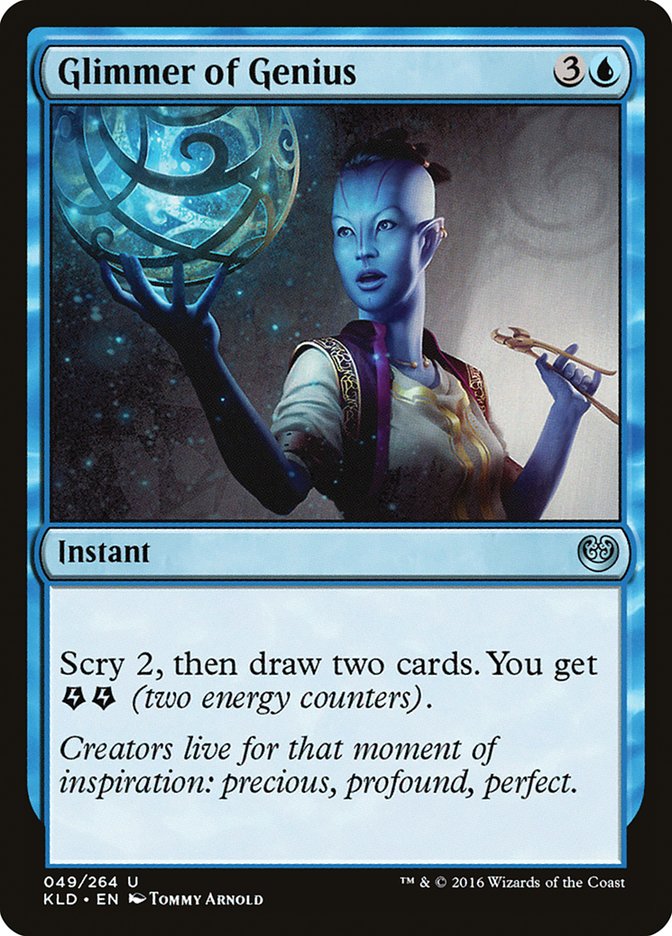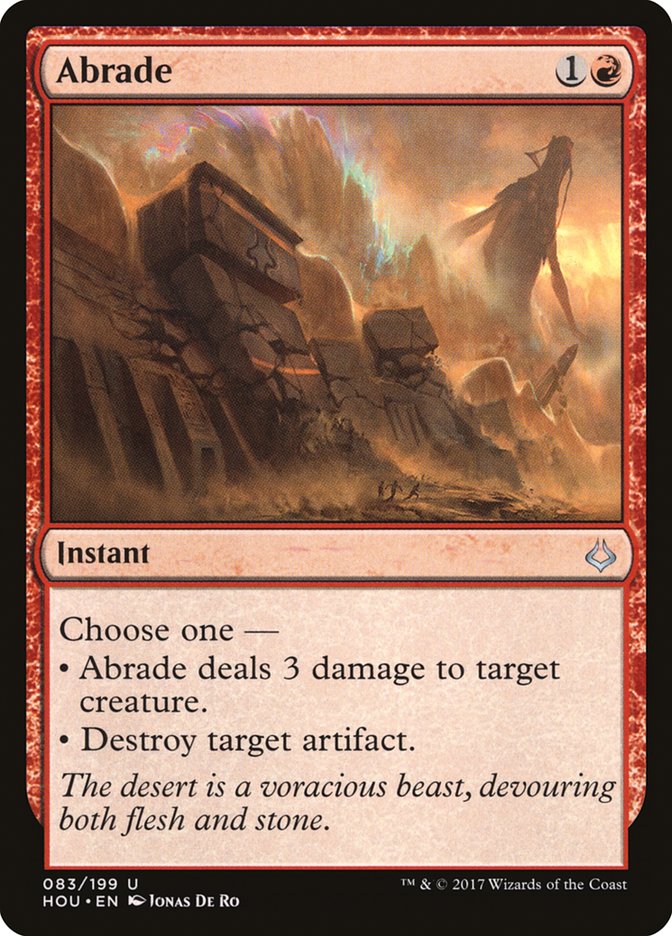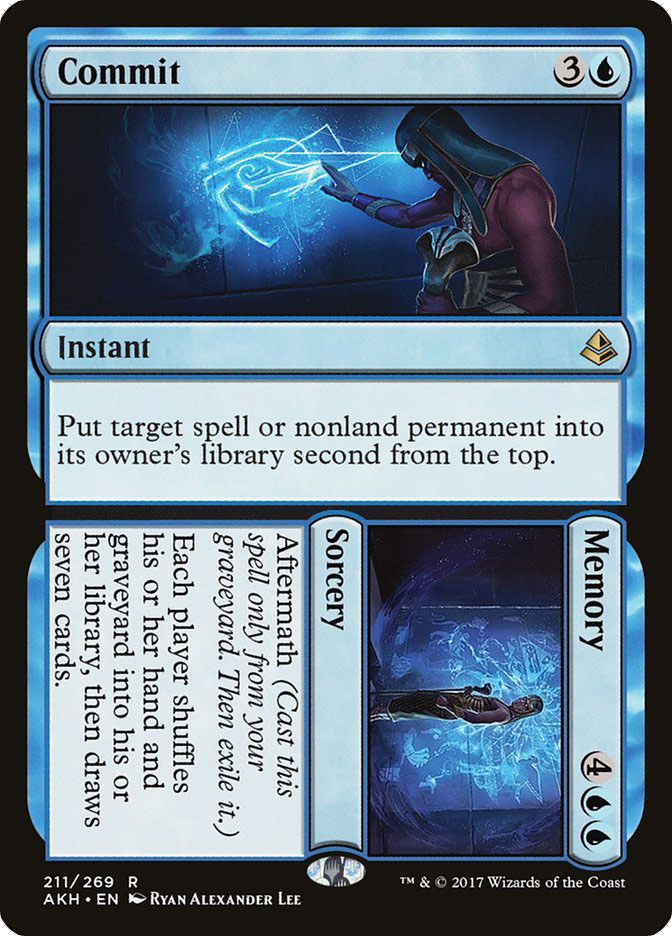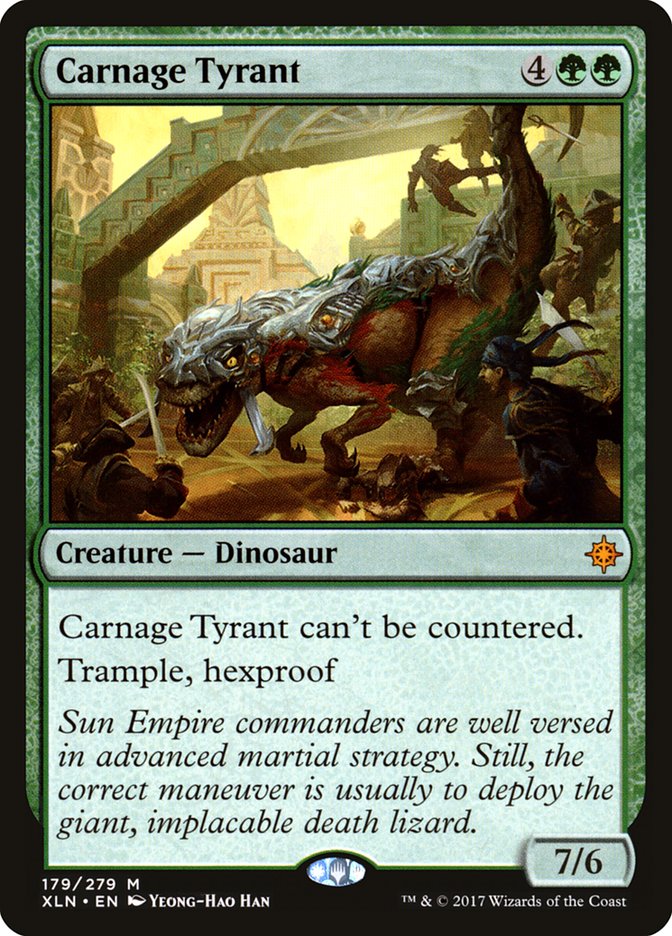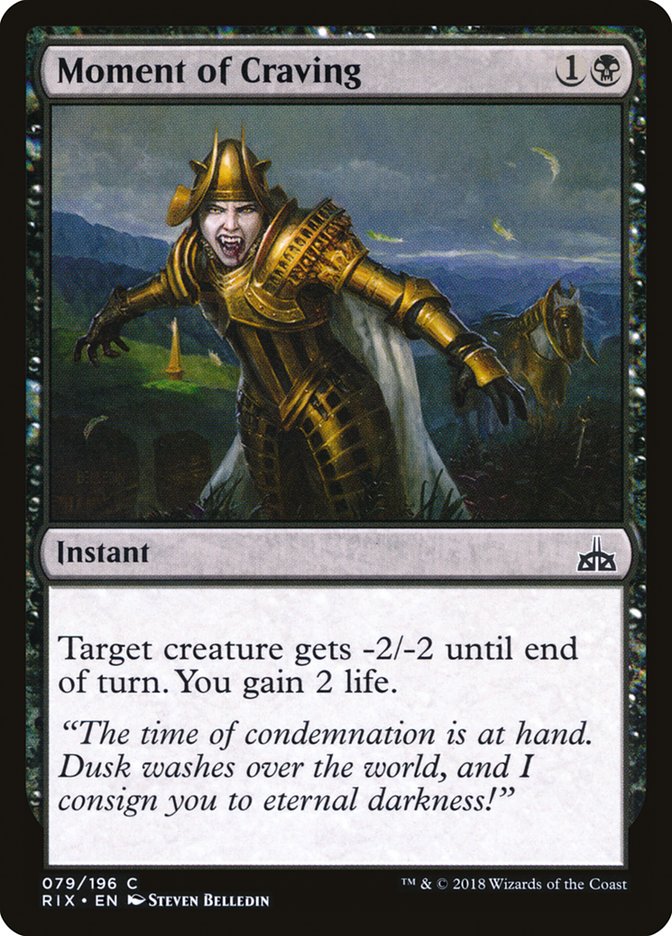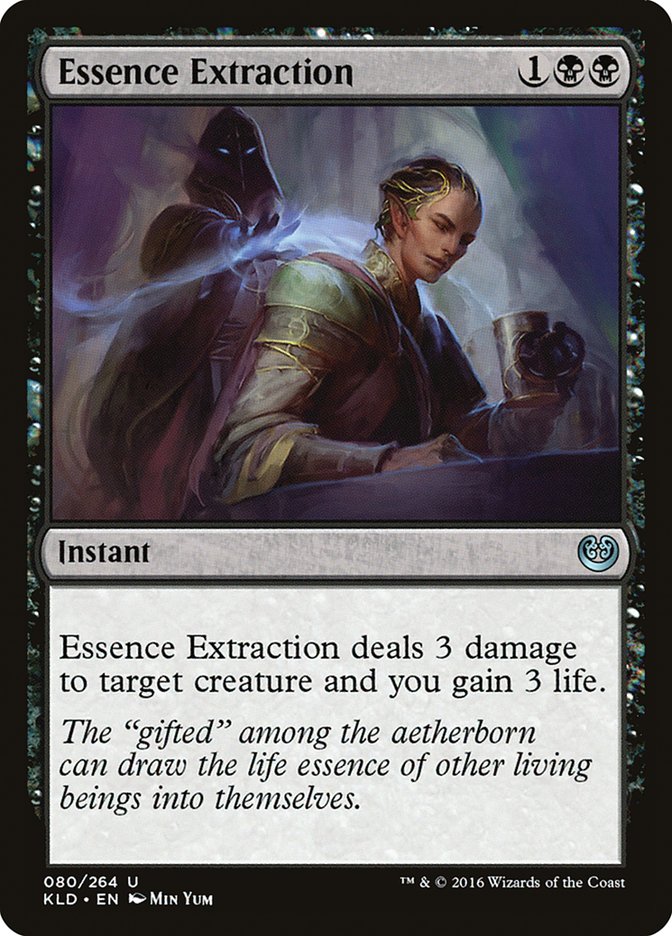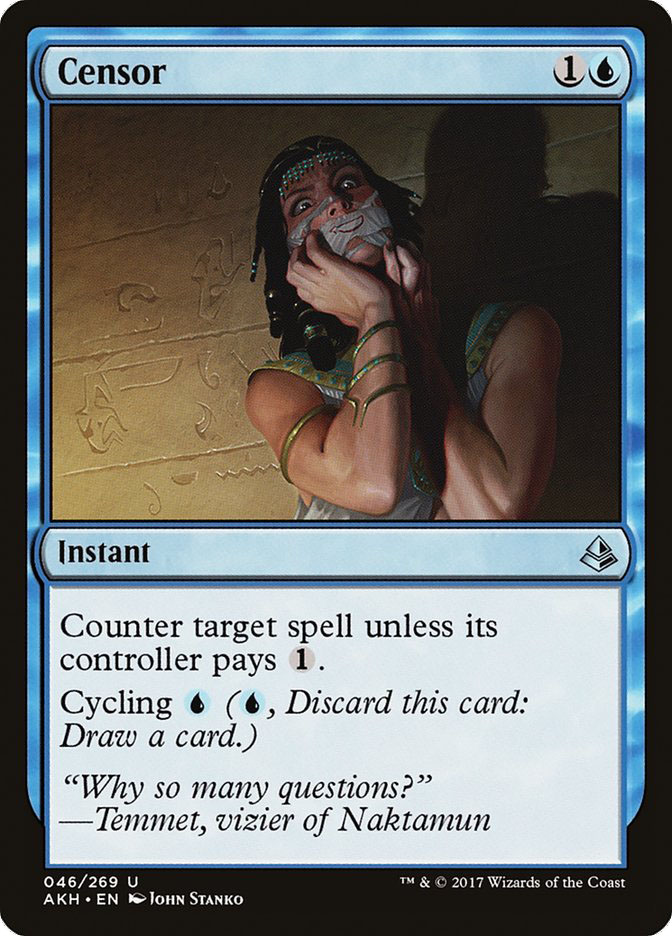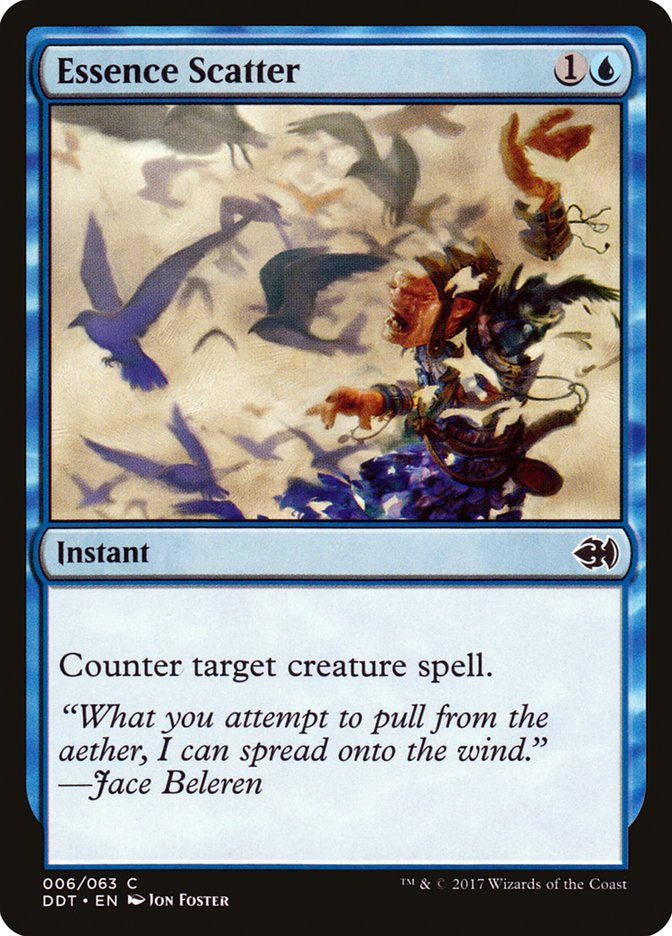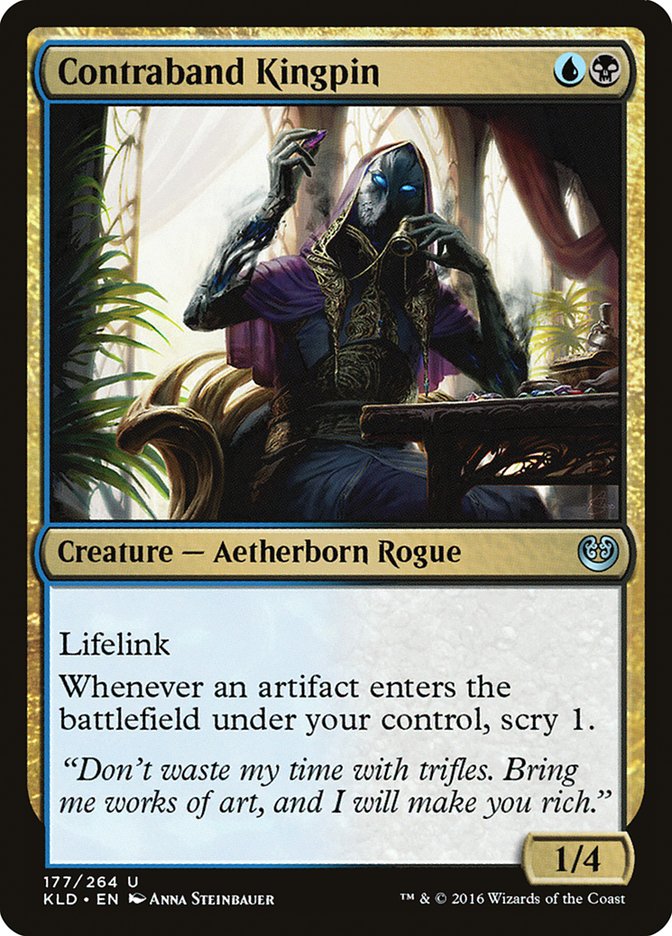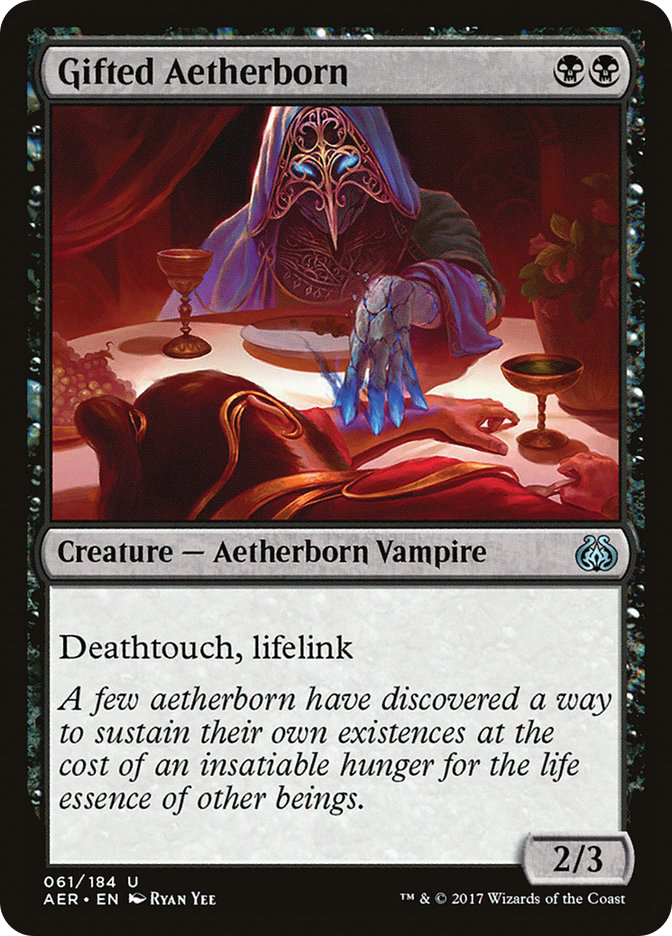I’ve been fascinated with the power behind U/B Control in the new Standard
format ever since watching teammate Jim Davis play it at #SCGPhilly. I
was impressed with the deck’s ability to not only keep pace with the aggro
decks of the format due to the quality removal spells but also how it would
turn the corner incredibly quickly with the strength of The Scarab God and
Torrential Gearhulk. So ever since then I’ve been playing a decent amount
of leagues on Magic Online with the deck to prepare for #GPMemphis
this weekend. After losing three of my last four matches Day One of #SCGIndy to not
make Day Two, I was actually much more confident with doing well in the
Standard Classic over the Modern Classic because of how powerful I believed
U/B Control to be. I wasn’t wrong, and only ended up losing two games
throughout the entire tournament, taking down first place with the
following list:
Creatures (6)
Lands (26)
Spells (28)

It turns out that I won’t be heading to #GPMemphis
this weekend now, so I’ll be writing all about the best deck to bring to
the tournament for those of you interested in bringing it. Instead of just
writing about some of the cards in the deck, this week I wanted to make
sure to answer the specific questions you may have about the deck.
Therefore, it’s
off to the Twitterverse
to find out what people wanted to know about U/B Control:
What changes would you make to the decklist going forward?
Honestly? Not much, as I was incredibly happy with the deck overall. The
worst card in the 75 in my opinion is Deadeye Tracker, and if there was a
specific sideboard card that you love and want to put in the deck, I would
replace one of them with it. Deadeye Tracker mostly fights the
God-Pharaoh’s Gift decks, but I believe U/W Gifts is already a solid
matchup without it, and it doesn’t improve the Esper Gifts matchup as much
because of its vulnerability to Walking Ballista. For me, I would replace a
Deadeye Tracker with another card to help the W/B Tokens matchups, which is
what I would be most worried about for the deck right now. I’m not exactly
sure what that card is, but most likely another Golden Demise or Negate.
Why play U/B Control over Grixis Energy?
The most popular question people have had for me so far have been in this
vein. Grixis Energy is one of the most popular decks in the format, so why
play U/B Control instead of having access to the third color? The easy
answer people would probably come up with is having a better manabase, by
that I mean more basic lands and therefore, less lands that potentially
enter the battlefield tapped, but that’s not the real reason. It’s about
the top end of the deck.
Glimmer of Genius is a drastically different card than Rekindling Phoenix
or Chandra, Torch of Defiance, and it’s the better four-drop “threat” than
the other two. It allows your deck to have an immense amount of consistency
by efficiently digging land drops or whatever answer or threat you’re
looking for. There are many times when you want to have the ability to hold
up Vraska’s Contempt anyway to be able to answer a Hazoret the Fervent or
Glorybringer immediately, and if your opponent plays around it then you can
cast Glimmer of Genius for more protection. With two of the most important
cards in the deck being four-mana instants, there’s no better top end card
for us to take advantage of them than Torrential Gearhulk. So I much prefer
the card advantage and selection of Glimmer of Genius and the flexibility
of Torrential Gearhulk over the red threats from the Grixis decks.
The biggest reason to play Grixis over U/B is the versatility of Abrade
being able to destroy artifacts. Both artifacts and enchantments can be
very problematic for U/B Control, which leads me to my next question:
Why are you playing Commit // Memory?
If I had to pick one card from the tournament that impressed me the most,
it would be Commit. When paired with Field of Ruin to force your opponent
to shuffle their deck, it can remove permanents such as Arguel’s Blood Fast
or Profane Procession for good. I think it’s a much better card to deal
with artifacts and enchantments than Consign, which simply bounces the
permanent back to their hand. It can also slow down an opposing Carnage
Tyrant that is being cast, as it doesn’t counter the spell. Memory is also
an important card for the deck to have access to as it can catch you back
up in the late game if you flood out or your opponent is grinding you down.
The most memorable play I made over the weekend with Commit was using it on
my opponent’s end step turn 7 to remove a Cast Out that exiled my
Torrential Gearhulk, which flashbacked the Commit to remove a Thopter
Arrest that exiled my Treasure Map. With the three mana left over I used
Field of Ruin to force my opponent to shuffle the two enchantments back
into their deck, and with the land I searched for off Field of Ruin I
activated Treasure Map and started digging.
What was the plan for Carnage Tyrant?
Speaking of Carnage Tyrant, it’s honestly not a card I’m scared of much
with U/B Control and therefore, I didn’t have a “clean answer” for it in my
75. First of all, it’s usually only a two-of in some sideboards, so there’s
a very good chance you’ll never run into the card, and no one actually cast
it against me in the tournament, even though a few opponents brought them
in. Even if your opponent does resolve a Carnage Tyrant against you, which
has happened a few times in my leagues on Magic Online, The Scarab God does
a wonderful job at creating blockers that Carnage Tyrant struggles getting
through. So I guess to answer the question, my plan for Carnage Tyrant is
to play The Scarab God.
Moment of Craving or Essence Extraction?
Considering that I have four copies of Moment of Craving and zero copies of
Essence Extraction in the 75, this one is pretty easy, but I’ll explain
why. Essence Extraction was a critical part of the format to deal with
Rampaging Ferocidon, but that card isn’t legal anymore. The red aggro decks
of the format are now filled with creatures that have toughness two or
less, besides Kari Zev, Skyship Raider, and having a card that is easier to
cast (as well as cheaper) is much more important. Moment of Craving can
even help your creatures in combat at times, or virtually gain four life by
shrinking a larger attacking creature in a pinch. I’ve been very impressed
with Moment of Craving in the deck and love having access to all four to
ensure having a good Mono-Red Aggro matchup.
Why only one Censor? Isn’t it the best possible card for a control deck?
Honestly, I don’t think Censor is a very good card and for the most part,
I’ve played online without one in my list. I could easily see playing a
fourth Essence Scatter or a Negate over it. I never actually countered a
spell with Censor throughout the day, and it was just a one mana cycler for
me. Most everyone knows about the card and to play around it when possible,
and in the late game it doesn’t have a chance at countering a spell. Censor
has the ability to be very good when in your opening hand if it counters
something, but generally I don’t want to have to spend a mana to cycle it
when it needs to be a different card, which is frequently an issue.
Why not four Essence Scatter?
Essence Scatter, unlike Censor, is a much more reliable counterspell, but
I’m satisfied with only having three. The short answer is that even though
there are incredibly powerful creatures in the format, the creature-based
decks are your best matchups, and having access to a fourth Essence Scatter
isn’t really necessary.
Why Contraband Kingpin over Gifted Aetherborn in the sideboard?
It’s all about the fourth toughness. Being easier to cast is just a bonus
for Contraband Kingpin, but four toughness is a critical number because it
survives Lightning Strike and Abrade while also being able to block Toolcraft Exemplar, Veteran Motorist, and Scrapheap Scrounger turn after turn. The
extra point of power that Gifted Aetherborn provides doesn’t make up for
the loss in toughness, nor would you bring it in matchups where the
deathtouch ability shines.
Those should cover most of the questions people had about the deck, but if
I didn’t get to yours or if you have another question, do get in touch. For
now though let’s get to everyone’s favorite part: the sideboarding guide!
For the sake of the guide, I’m going to assume one Deadeye Tracker has been
removed from the sideboard and replaced with a Golden Demise.
VS Mono-Red Aggro
Out:

In:

Mono-Red Aggro is a very good matchup for U/B Control and one of the main
reasons to play the deck. It’s not often that the control deck has a good
matchup against the aggro deck, but both Moment of Craving and Vraska’s
Contempt are incredibly good in the matchup. You also don’t have any draws
that are filled with clunky creatures that aren’t able to stabilize, as
opposed to what can happen with the various U/B/x Midrange decks. You
usually want to play The Scarab God as quickly as you can to start turning
the corner as long as you have stabilized enough where you don’t need to
hold up counter magic or removal. Each turn past turn 4 I often think to
myself, “What would be the best play if my opponent casts a Hazoret the
Fervent the next turn?” If they’re heavier than normal on small creatures,
feel free to bring in the second Golden Demise over another Disallow.
VS G/R Aggro
Out:

In:

I happen to think this is a good matchup for U/B Control, but in talking
with Brennan DeCandio about it this weekend he believes he’s favored from
the G/R Aggro side. I bet the matchup is very close. Vraska’s Contempt has
a lot of heavy lifting to do in the matchup, so always be on the lookout
for more when casting Glimmer of Genius. It’s also the main target for a
Torrential Gearhulk Flashback. I bring in the single Golden Demise to have
the ability to clean up multiple small creatures, and it’s particularly
strong against Pia Nalaar. Struggle is one of their best cards against you
as it can cleanly answer The Scarab God, so it’s a card to play around if
possible.
VS Grixis Energy
Out:

In:

There are so many different ways to build Grixis Energy, especially
considering the sideboard plan against U/B Control, that it’s hard to give
a definitive sideboard plan. I like to go down to three Fatal Push if
Glint-Sleeve Siphoner is the only main target because I don’t want to be
flooded on them. Censor is a weaker card in matchups that go long and when
the opponent has access to Duress to see it and play around it, so it gets
cut. One thing to watch out for from the opponent is them bringing in Lost
Legacy to exile your Vraska’s Contempts, which can make it hard to have
enough answers for their threats. This happened to me in game 3 of round 6
of the Standard Classic, and afterwards Commit ended up being crucial to me
stabilizing. If your Grixis Energy opponent’s particular build is much more
focused on spells and planeswalkers, feel free to trim either Fatal Push if
they don’t have Glint-Sleeve Siphoner or Essence Scatter for Duress.
Nezahal, Primal Tide is also an option for the matchup, but be wary they
can cast flyers that get over it with ease, so I would only bring it in
against spell-heavy versions of Grixis.
VS U/B Control
Out:

In:

Nezahal, Primal Tide truly shines in mirror matches and is the card you
actively want to try to find. Make sure you keep enough cards in hand to be
able to protect it, meaning sometimes in the mid game you’ll have to
refrain from casting cards like Duress in order to use them as Nezahal
protection. Besides that, Search for Azcanta and Arguel’s Blood Fast are
two powerful cards on either side, making having access to a second Commit
over the fourth Vraska’s Contempt to deal with them as necessary. This is a
place where if you keep Deadeye Tracker, it does a good job at keeping
opposing Torrential Gearhulks at bay for a small mana investment.
VS Abzan Tokens
Out:

In:

This is the worst matchup in the format, as they not only don’t have good
targets for our removal spells, they are also built around very problematic
enchantments. The matchup does get much better after sideboard when you
have access to Duress and Negate however, and it’s certainly winnable.
Commit is the best spell in the deck since it can remove the enchantments
from the battlefield, and the goal is to close the game out quickly with
The Scarab God or Torrential Gearhulk when the window’s open. Contraband
Kingpin does a quality job at making sure we don’t die to random tokens
while trying to get set up.
VS Mardu Vehicles
Out:

In:

Mardu Vehicles is another good matchup for you with the cheap interaction
you have shining through. Contraband Kingpin does a wonderful job gumming
up the ground and forcing them to go wide, and then Golden Demise can clean
up the battlefield. Some builds may go planeswalker heavy after sideboard,
and if that’s the case feel free to keep a Commit or two in for some extra
ways to deal with them.
***
I know it’s not every matchup but hopefully it’s a good base for you to
battle with. U/B Control has both the power and consistency that I want in
a Magic deck, and I think it’s a great choice for #GPMemphis
this weekend.


